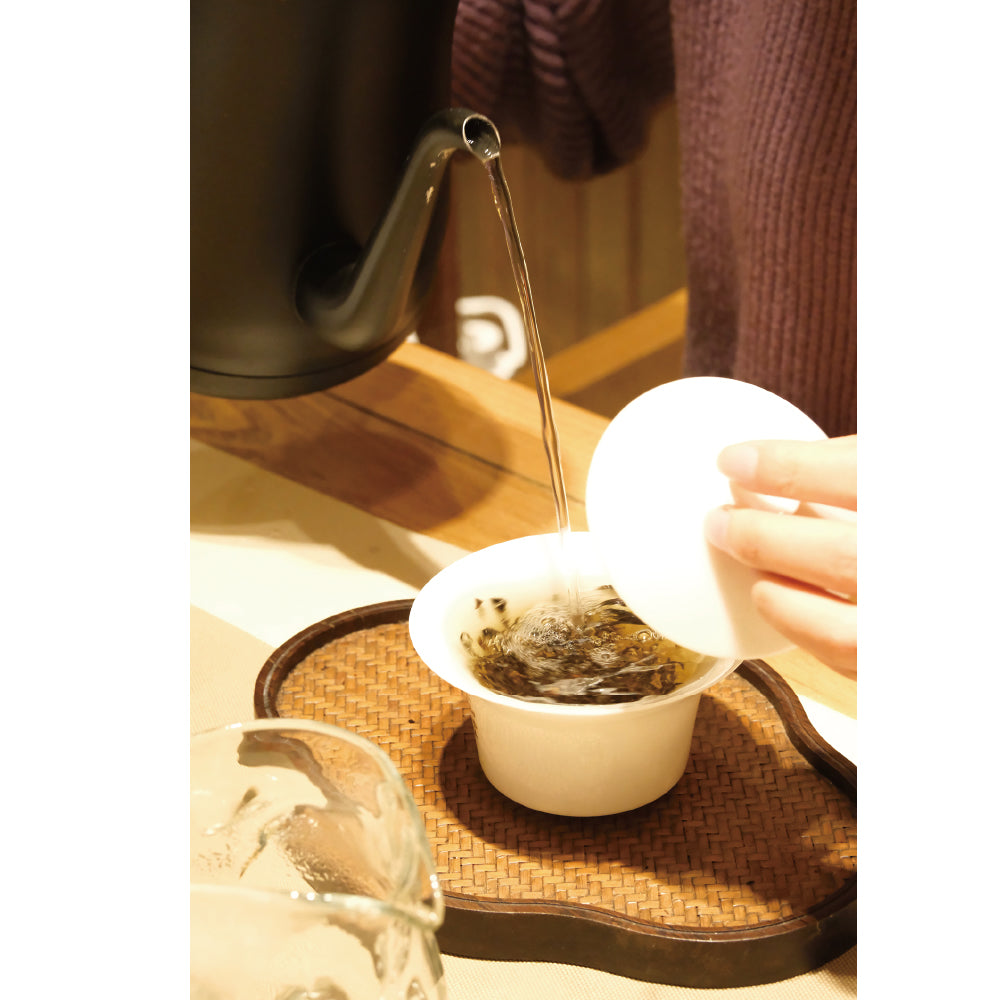A guide book for all Chinese black tea lovers by Zhengshantang
You can download the PDF guide book at the end of this article.
Chapter 1: Brand Introduction
Chapter 2: Origin: Lapsang Souchong - the originator of black tea in the world
- The History of black tea
- The production area of Lapsang Souchong
- The craftsmanship of Lapsang Souchong
- The Quality of Lapsang Souchong
Chapter 3: Inheritance: Jinjunmei - Inheritance and Innovation of Lapsang Souchong
- The Birth of Jinjunmei
- The influence of Jinjunmei
- The craftsmanship of Jinjunmei
- The quality of Jinjunmei
Chapter 4: Development: Junmei black tea - the combination of Jinjunmei craftsmanship and raw materials from various production areas across China
- The spread of Junmei craftsmanship
- The prosperity of innovative black tea
- The quality of Junmei black tea
Chapter 5: Standard: the formation and application of the tea standard system
- The establishment of tea standard system
- The application of tea standard system
Chapter 6: How To Brew
- Selection of tea sets
- The process of brewing tea
- Key point of brewing tea
- Tasting card
Chapter 7: Tasting and Pairing
- Tasting method
- How to pair with flowers, fruits, food
Chapter 8: Storage
- How to tell if the tea is damp
- How to store tea
Chapter 9: Black tea and health
- Junmei black tea contains a higher proportion of theaflavins
- Junmei black tea contains a higher percentage of TSA
- Health benefits of black tea
- How to Drink Black Tea Healthily
Chapter 1: Brand Introduction
The world's black tea originated in China. In the middle and late Ming Dynasty (about 1568 A.D.), the ancestors of the Jiang family founded Lapsang Souchong, which is recognized as the originator of black tea in the world; in 2005, Jiang Yuanxun, the 24th generation inheritor of Lapsang Souchong black tea, on the basis of inheriting more than 400 years of black tea culture and production skills, he led the team to develop high-end black tea Jinjunmei, which filled the gap in China's high-end black tea market and promoted the development of the entire black tea industry.
Fujian Zhengshantang Tea Industry Co., Ltd. has more than 400 years of inheritance of black tea culture and production skills. The company is located in Tongmu Village, the core protection area of Wuyi Mountains National Park in Fujian Province. This is the core area of the world cultural and natural heritage site. The birthplace of Lapsang Souchong, the ancestor of black tea in the world.
Since 2010, Zhengshantang has exported scientific and standard Junmei black tea production technology, selected high-quality tea producing areas across the country, built a Junmei Chinese black tea industry system, promoted the standardization of Chinese black tea, and established a model of Chinese clear drinking black tea.
Because of its focus and professionalism, our company participated in the drafting and formulation of the Chinese National Standard for Lapsang Souchong Black Tea (Part III), the Jinjunmei Industry Standard (Jinjunmei Tea) and the cross-provincial and national Junmei Black Tea Group Standard (Jinjunmei Tea) eyebrow black tea).
From the birth of black tea to the founding of Jinjunmei, Zhengshantang has inherited black tea for four hundred years.
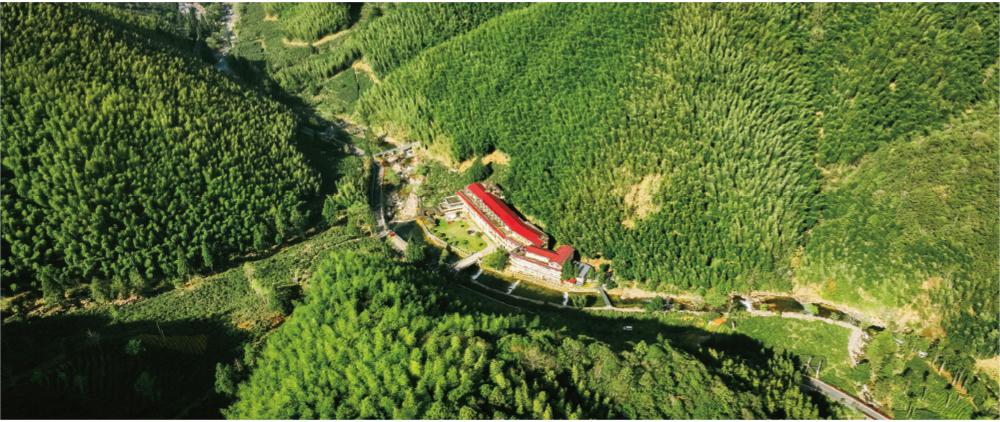
Chapter 2: Origin: Lapsang Souchong - the originator of black tea in the world
1. The History of black tea
The birth of black tea
The birthplace of Lapsang Souchong is Tongmuguan, Wuyi Mountain, Fujian, China. The ancestors of the Jiang family in Zhengshantang settled in Tongmuguan and planted tea for generations. At the end of the Ming Dynasty and the beginning of the Qing Dynasty (about 1568 A.D.), it was the tea-picking season. A group of officers and soldiers passed through Tongmuguan and slept on the picked tea greens at night. After the officers and soldiers left, the tea leaves that were originally made of green tea had turned red. Jiang's ancestors repeatedly rubbed the fermented tea leaves and baked them with pine wood, which is rich in paulownia. When the pine wood is burned, it produces rich pine smoke. After the tea absorbs the pine smoke, its color becomes black and oily (so in English, black tea is called black tea instead of red tea), and it exudes a unique pine smoke aroma.
Jiang's ancestors picked this batch of tea leaves and sold them at a low price in Xingcun town. Unexpectedly, in the next year, someone would pay several times the price to buy this tea. Therefore, the earliest black tea in the world - Lapsang Souchong was born.
The spread of black tea
Black tea is the tea with the largest production and sales volume among all kinds of tea in the modern world. It is a worldwide beverage and a highly traded commodity overseas, accounting for more than 80% of the world's tea consumption and trade.
In 1604, Dutch merchants brought "Lapsang Souchong" black tea into Europe, and black tea went abroad for the first time.
In 1662, Princess Catherine of Portugal married King Charles II of England, and Lapsang Souchong black tea was included in her dowry. Later, Queen Anne advocated replacing wine with tea and introduced tea into the upper class, which gradually evolved into "afternoon tea".
Later, black tea was sold overseas in large quantities, and Lapsang Souchong black tea from Wuyi Mountain in China was loved by people all over the world and changed the world pattern.
After 1684, Wuyi black tea began to be exported directly from Xiamen port.
In 1745, the East India Company's large ocean-going merchant ship Gothenburg arrived in China for trade, but hit a rock and sank on the way back. The sunken ship was salvaged to sea after more than 100 years, and Wuyi BOHEA (Lapsang Souchong) accounted for a considerable amount on the manifest.
In 1773, the "Boston Tea Party" was the fuse of the American War of Independence, and it was the Lapsang Souchong black tea that was transported from China to North America by the East India Company.
In 1840, the export of Wuyi black tea brought huge wealth to the Qing government. In order to balance the trade deficit, Britain exported opium to China. Lin Zexu destroyed opium in Humen city, triggering the first Opium War.
In 1848, in order to obtain the secret of making black tea, the British Robert Fujun arrived in Wuyi Mountain. In 1851, he brought the production technology of Lapsang Souchong to India, and later there were international famous teas such as Indian black tea. So far, the production technique of Lapsang Souchong black tea has spread to foreign countries.
In 1876, Yu Ganchen, who served as the county magistrate in Chong'an County, Fujian Province, returned to his hometown and brought back Fujian's "Lapsang Souchong" black tea production method. He set up a local black tea factory and successfully trial-produced it, and Keemun black tea was born. Subsequently, all parts of China also followed the Lapsang Souchong technique, and gradually developed Dianhong(Yunnan black tea), Fujian black tea and other local Gongfu black teas.

The prosperity of black tea culture
Due to the unique quality of Lapsang Souchong black tea, it has become a well-known famous tea in Europe and America. In the United Kingdom, many traditions have arisen from Lapsang Souchong black tea, among which "afternoon tea" is still popular today. Every day at four o'clock in the afternoon, the British will have 15-20 minutes of refreshment time. From the royal family to the general public, they will put down their work and drink a cup of afternoon black tea comfortably with the refreshment. A third of their life is teatime. A British folk song sings like this: "When the clock strikes four times, everything in the world stops for tea." Western nobles all drink Lapsang Souchong black tea, showing the various life styles in England.
Byron, a famous British poet in the 17th century, wrote in his long poem: "I feel that my heart has become so sympathetic, I must go to Wuyi black tea for help." "Chong'an County New Records" contains, "English people said: Wuyi tea color, red like agate, the quality is far better than India and Ceylon. Whoever treats Wuyi tea to guests, the guests will stand up and pay respects." It shows that Lapsang Souchong black tea was favored by the upper class at that time.
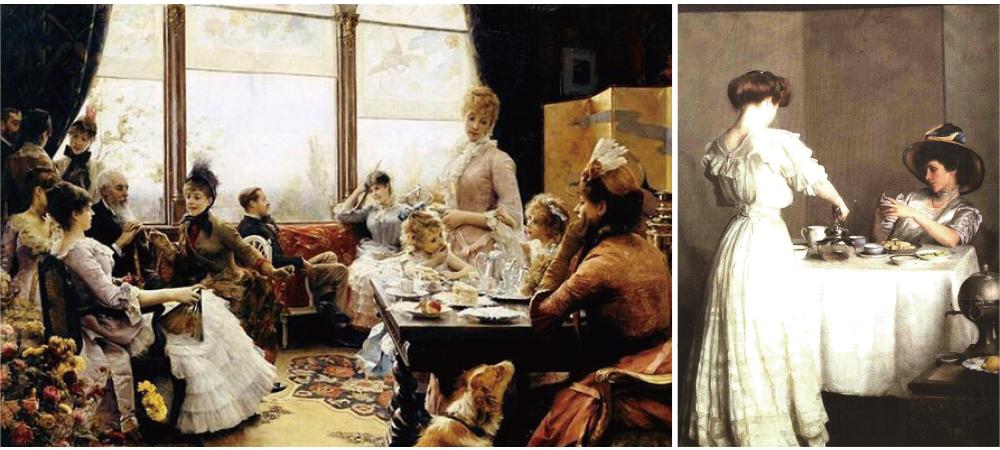
2. The production area of Lapsang Souchong
Lapsang Souchong Black Tea is grown in Wuyishan National Nature Reserve, the birthplace of black tea in the world and a double heritage of world culture and nature. According to the "Chinese Tea Classics", the "Lapsang" of Lapsang Souchong indicates the true meaning of "produced in high mountain areas", and its coverage "centers on Miaowan and Jiangdun Natural Villages in Tongmu Village, Wuyi Mountain, and north To Jiangxi Yanshan Shilong, south to Caodun Baiyeping, Wuyi Mountain, east to Da'an Village, Wuyi Mountain, west to Guangsiqiangan Pit, southwest to Shaowu Longhu Guanyin Pit, covering an area of about 600 square kilometers.
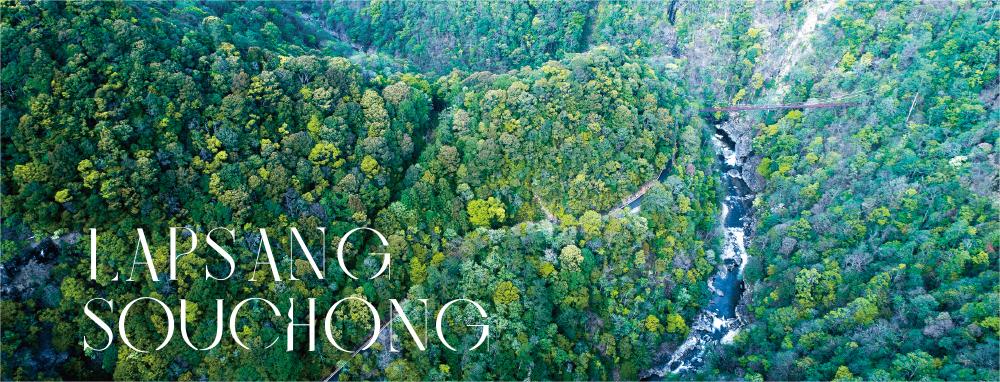
It has rich vegetation, high mountains and deep valleys, fertile soil, far away from pollution, and maintains a complete subtropical evergreen broad-leaved forest ecosystem. The unique natural conditions are conducive to the growth of tea trees and ensure the superiority of tea raw materials.
1500 meters/altitude: The average altitude of tea mountains is 800-1500 meters. Due to the high altitude, the temperature difference between day and night is large, which is very conducive to the growth of tea trees.
18°C/Temperature: It belongs to the subtropical monsoon humid climate, with an annual average temperature of about 18°C. There are many nitrogen-containing compounds such as amino acids and proteins produced and accumulated in the tea tree.
2000 mm/precipitation: The annual precipitation is above 2000 mm, which is the area with the most precipitation in Fujian Province. The tea has good tenderness, high quality, and can avoid freezing damage.
85%/relative humidity: The annual relative humidity is as high as 85%, the foggy days are more than 100 days, the high mountains are filled with clouds and fog, and the air humidity is high.
PH=4.5-5: It belongs to mountain yellow soil and mountain yellow red soil, with a PH value of 4.5-5 and a soil layer thickness of 30-90 cm. The soil in this area is loose and the soil has high natural fertility, so there is no need to apply chemical fertilizers.
96.3%/Forest coverage rate: With a forest coverage rate of 96.3% and a complete ecosystem, it has formed a complete and coordinated biological chain and built a "natural protective screen" for the growth of tea trees.
3. The Craftmanship of Lapsang Souchong
Picking: You must choose the older small-leaf tea trees in the protected area, and pick one bud and two or three leaves. The best time is to pick a sunny day from Lixia to Earbud (Traditional Chinese solar terms, at the beginning of May).
Withering: During the tea making season in the Tongmuguan area, there is more rain and less sunny days. Generally, indoor heating and withering is carried out in the "Qinglou"(The cyan building) of the primary tea factory.
Kneading: In the early stages of kneading, manual kneading is often used until the tea sticks are tightly rolled and the tea juice overflows. Now they are all carried out by kneading machine.
Fermentation: Using the method of hot fermentation, put the moderately twisted tea base in a bamboo basket and cover it with a thick cloth. The tea leaves are fermented under the action of their own enzymes, and the green tea changes color into yellow-red with a leisurely fragrance.
Passing the red pot: This is a unique process of Souchong black tea. When the temperature of the iron pot reaches the required temperature, put in the fermented leaves and stir fry with both hands. The role of the red pot is to inactivate the enzyme, so as to keep the aroma of souchong black tea pure and sweet, the tea soup is red and bright, and the taste is strong.
Re-kneading: The tea after being fried in a pan must be re-kneaded to shrink the loosened tea sticks.
Smoked roasting: Shake the re-kneaded tea on the bamboo sieve, put it on the bottom hanger of the "brothel", burn pine firewood in the outdoor stove, let the hot air flow into the bottom of the "Qinglou", and the tea is in the process of drying The continuous absorption of rosin makes Souchong black tea have a unique aroma of rosin.
The above withering-kneading-fermentation-passing in a red pot-re-kneading-smoking and roasting are the traditional production techniques of Lapsang Souchong, and they all need to be completed in traditional “Qinglou".


4. The Quality of Lapsang Souchong
Due to the unique growing environment and unique traditional production process, Lapsang Souchong black tea has a unique aroma of pine smoke and longan, and its quality characteristics are unique.
Appearance: The cord is strong and tightly knotted, the color is black and oily, and the dry smell has a special fragrance of pine smoke and dried longan.
Tea Color: orange red, bright and clear; resistant to brewing, various characteristics are still obvious after four or five brews.
Taste: mellow, smooth and refreshing, neither bitter nor astringent, with a long-lasting aftertaste, suitable for directly drinking or with sugar and milk;
Tea leaves after steeping: soft, bronze in color.
Storage resistance: Under normal temperature conditions, the quality can remain unchanged for three to five years or even longer, the taste will be more mellow, and the pine fragrance will be more pure and refreshing.
Qinglou, a centuries-old tea-making wooden building
Qinglou is an ancient wooden building used for processing tea material. It has a history of nearly a hundred years in Tongmu village, Wuyi Mountain. The Qinglou is divided into three and a half floors, and the bottom half is used to burn masson pine wood to transfer heat and pine smoke. The first floor is the roasting room. The fermented tea leaves are placed on a round bamboo sieve, and then inserted into the baking rack for smoking and roasting. On the second floor, the temperature of the Qinglou can be adjusted by opening and closing the door; on the third floor, the residual temperature is used to wither fresh leaves. During the tea-making season, Paulownia is always filled with a scent of pine smoke.
How does Lapsang Souchong's rosin incense form?
Masson pine pine wood is an essential raw material for traditional Lapsang Souchong tea making. Carefully smoked in the tea-making brothel of Tongmuguan in Wuyi Mountain, the Lapsang Souchong tea base absorbs rosin continuously during the process of withering and drying, which makes Lapsang Souchong black tea have a strong and unique aroma of rosin and longan.
Chapter 3: Inheritance: Jinjunmei - Inheritance and Innovation of Lapsang Souchong
Jinjunmei black tea is made from the buds of the original ecological alpine tea trees in the Wuyi Mountain National Nature Reserve with a radius of 565 square kilometers. It is a high-end black tea developed by integrating innovative technology based on the traditional technology of Lapsang Souchong black tea.
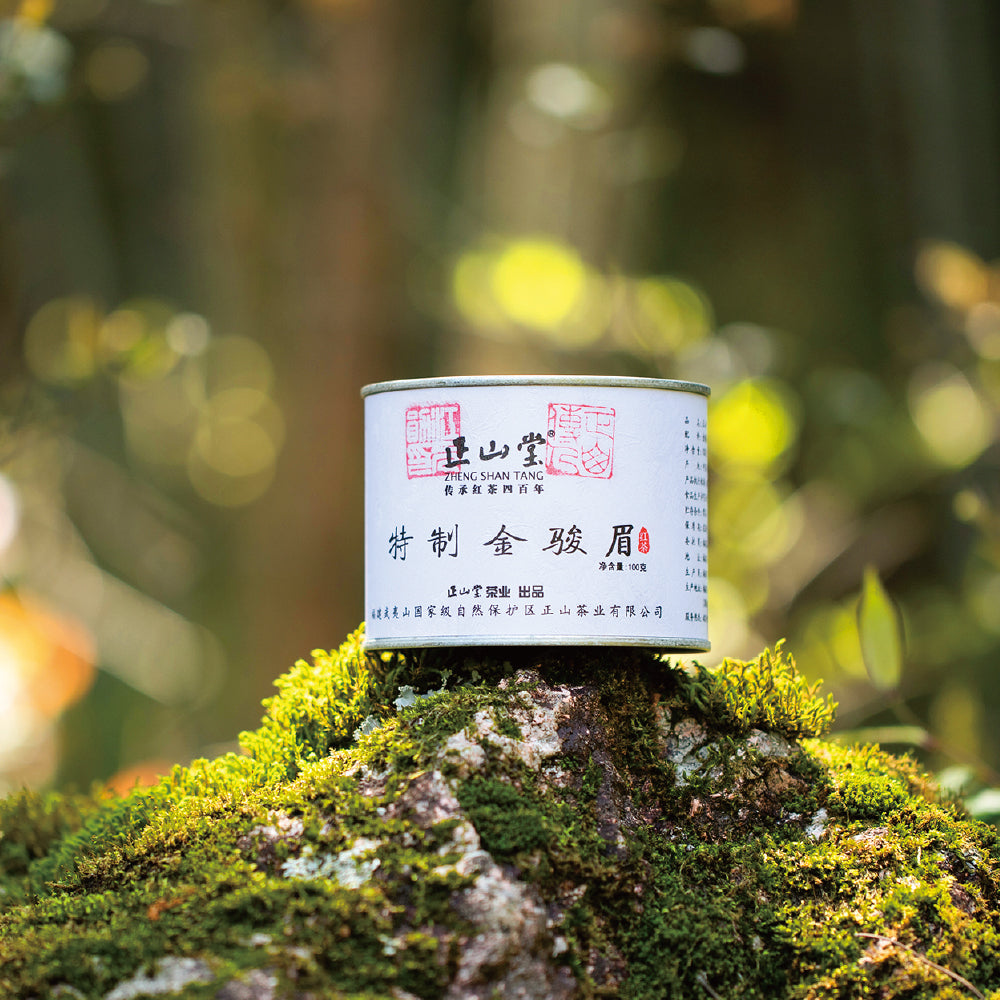
1. Birth of Jinjunmei
Lapsang Souchong black tea is made by traditional techniques and has the characteristics of "thick, red and bitter". All along, it is mainly used for export and the price is low.
Around 2000, Jiang Yuanxun, the 24th generation descendant of Lapsang Souchong Black Tea, led the team to continuously conduct experiments and technology accumulation to develop higher-quality products in order to solve the problem of unsalable Tongmu tea leaves and barren tea mountains, and to develop the domestic black tea market.
One afternoon in July 2005, Jiang Yuanxun chatted with Mr. Zhang Mengjiang and other friends in Tongmu village on the topic of "making good tea, drinking good tea, and buying good tea". Brings inspiration. Just at this time, a tea farmer passed by the door to trim the tea garden. Jiang Jiang Yuanxun immediately arranged for tea farmers to pick tea buds; and began to instruct Jiang Junsheng, Jiang Junfa, Liang Junde, Wen Yongsheng, Chen Guibao, Hu Jiexing and others to wither the buds according to the black tea production process, adopt temperature and humidity control fermentation, and charcoal roasting to get dry tea.
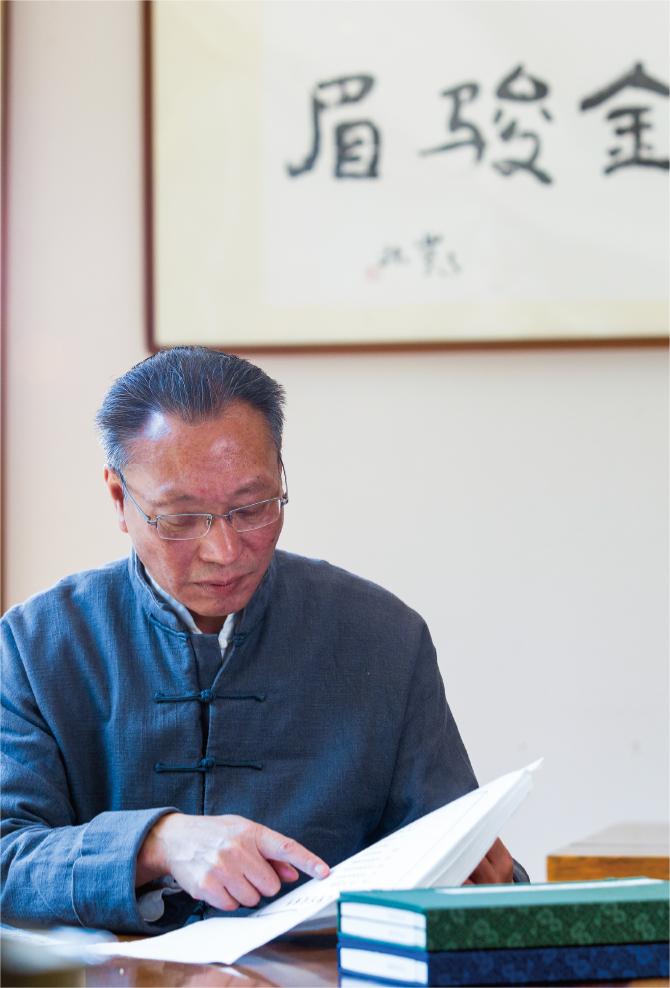
On the second day, Jiang Yuanxun brewed and tasted together with Mr. Zhang and others. When boiling water rushes in, the room is full of fragrance, the soup is golden and translucent, the taste is sweet and refreshing, moistens the throat, and has a long aftertaste. " This is the rudiment of what was later named "Jinjunmei".
In 2006, through experiments, analyzes and comparisons, Jinjunmei was basically finalized in September. In 2007, according to the feedback in the tasting, Jiang Yuanxun further optimized the quality and perfected the craft, and officially put it on the market. As soon as Jinjunmei was launched on the market, it was enthusiastically sought after by tea lovers and quickly became popular. Jiang Yuanxun also won the "Lu Yu Award", the highest honor in the Chinese tea industry.
2. The influence of Jinjunmei
Jinjunmei black tea has the quality characteristics of "clear, fragrant, sweet and mellow". It is suitable for directly drinking and meets the consumption needs of the times, which has triggered a domestic consumption boom of black tea. The founding of Jinjunmei filled the gap that there was no high-end black tea in the world for 400 years. It not only drove the development of the overall tea industry in Wuyi Mountain and surrounding areas, but also influenced the whole country , leading the revival and development of black tea in China, and changed Chinese black tea enterprises. The situation of relying on foreign trade only for raw materials abroad has brought black tea into a new development period.
3. The craftmanship of Jinjunmei
Jinjunmei is a treasure of black tea. Compared with Lapsang Souchong, it saves the process of smoking and roasting, has higher requirements on raw materials, and is more refined and strict in production.
Proper picking: the picking standards are very strict, and only the buds of alpine tea trees in the core protected area of Wuyishan National Park are used as raw materials. We pick only once a year, only spring first flash buds are picked, emphasizing tender picking and timely picking to ensure the excellent and pure quality of Jinjunmei.
Oxygenation and heating, moderate light withering: Jinjunmei is mainly withering with artificial indoor oxygenation and heating, supplemented by sunlight withering. Moderate light withering method is used to preserve more theaflavins, so the quality is excellent and the liquid color is golden.
Segmented kneading: the combination of mechanical kneading and manual kneading is used to further tighten the eyebrow buds and form an ideal rope shape.
Suspended heating and oxygenation fermentation: Fermentation is the key process to form the color, aroma and taste of Jinjunmei. After years of observation and research, suspension heating and oxygenation fermentation is the most suitable method. Using the difference in temperature and humidity between upper, middle and lower levels to hang tea leaves indoors requires precise control of humidity, oxygen, time, etc.
Drying: Jinjunmei is baked in a baking cage and heated with Huai charcoal. Jinjunmei is roasted with high temperature and short time to form its unique aroma. And because it is fully baked, the aroma is pure, the quality is high, and the water content is low, it can be stored for a long time without deterioration.
4. The quality of Jinjunmei
The craftsmanship adopted by Jinjunmei is improved and innovated on the basis of the traditional craftsmanship of Lapsang Souchong, and has the quality characteristics of "fragrance and sweetness".
Appearance: The ropes are well-proportioned and tightly knotted, golden and black, mostly black;
Liquid color: golden and translucent with a halo, long-standing "milk curd", rich in substances;
Taste: sweet and refreshing, with alpine charm; sweet in the water, sweet and fragrant, showing a comprehensive fragrance of flowers, fruits and honey; continuous brewing 12 times, the taste and quality are the same;
Leaf after brew: bright, stretched, delicate and fresh, with a bronze color;
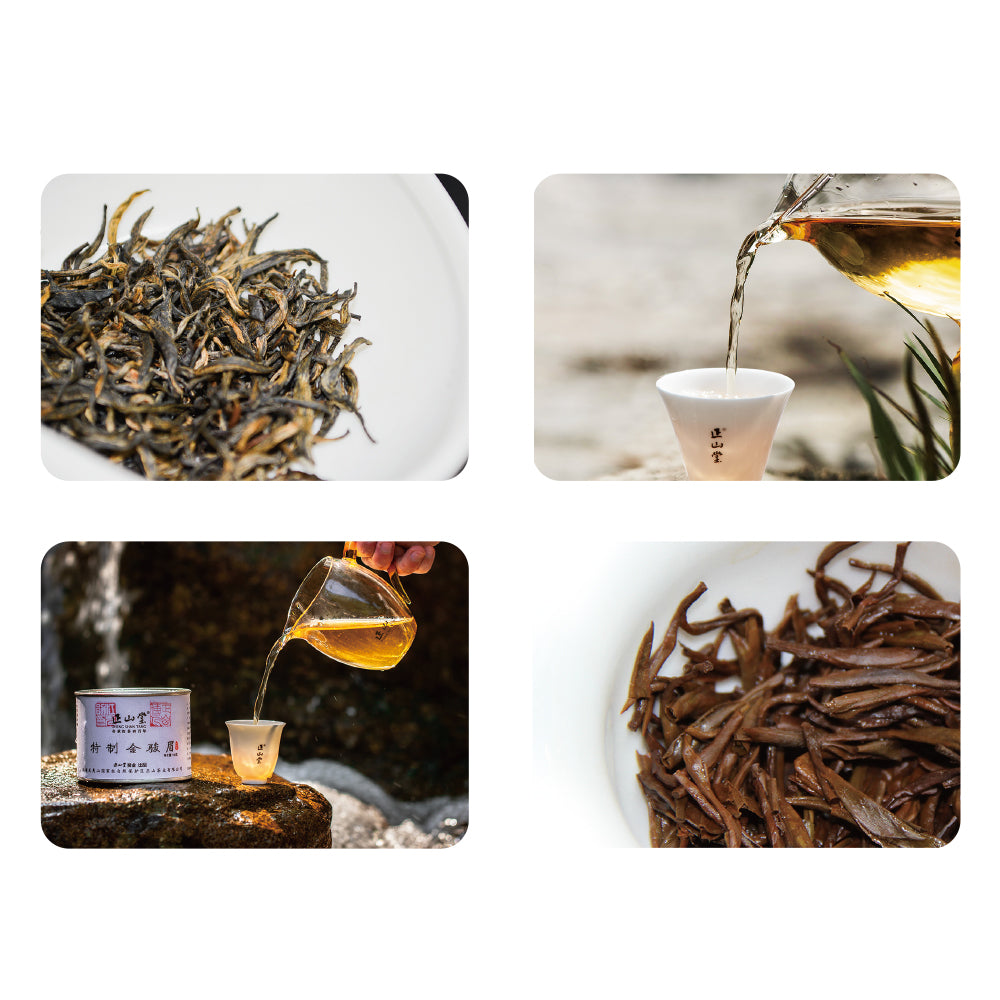
Chapter 4: Development: Junmei black tea - the combination of Jinjunmei craftsmanship and raw materials from various production areas across China
Junmei black tea is made with Junmei innovative technology, abides by the China tea group standard of "Junmei black tea", and is a black tea product with the characteristics of sweet, fresh and mellow quality. Junmei black tea not only has the natural customs and cultural customs of major tea producing areas across the country, but also has the taste of Jinjunmei's "golden soup color, delicate fragrance and sweetness". It is an innovative black tea with quality, standards and scale.

1. Junmei craft communication
Because of its unique quality and profound historical and cultural accumulation, Lapsang Souchong was once popular all over the world. Today, Zhengshantang Jinjunmei has won the trust and love of consumers with its inherent historical and cultural heritage, as well as its advantages in geography, product quality, and brand standards, and has set a benchmark in the industry.
The birth of Jinjunmei means the birth of an innovative tea-making process - Junmei technology. Since 2010, Zhengshantang has spread the scientific and standard Junmei black tea production technology to many backward and poor tea-producing counties across the country, and cooperated with Pu'an in Guizhou, Guzhang in Hunan, Badong in Hubei, Xinyang in Henan, Zhucheng in Shandong, Guangyuan in Sichuan, Huangshan in Anhui, Shaoxing in Zhejiang, Fengqing in Yunnan, Baisha in Hainan, Nyingchi in Tibet, Longlin in Guangxi and other places have cooperated in black tea production, researched and developed innovative black tea products, and driven the vigorous development of black tea industries in various places.
In 2018, Zhengshantang·Junmei China’s black tea industry system was initially established, which promoted the standardization of China’s famous and high-quality black tea, and the development of green tea economy and ecological economy.
2. The Prosperity of Junmei Black Tea
With Junmei's innovative technology as the core, Zhengshantang has invested a large number of production test personnel and scientific research forces, combined with the differences in soil, climate, precipitation, altitude, and variety in different production areas across the country, optimized technical standards and technological processes, and formulated the " Junmei Black Tea" group standard (T/CTMA 002), to build a modern agricultural base and service system for the black tea industry. At present, it has innovated and developed Xinyang black tea, Kuaiji black tea, Pu'an black tea, Guangyuan black tea, Badong black tea, Guzhang black tea, Wanqinghong, Dianhong, Chaoranhong, Chayu black tea, Baishahong, Longlinhong and other Junmei black teas.
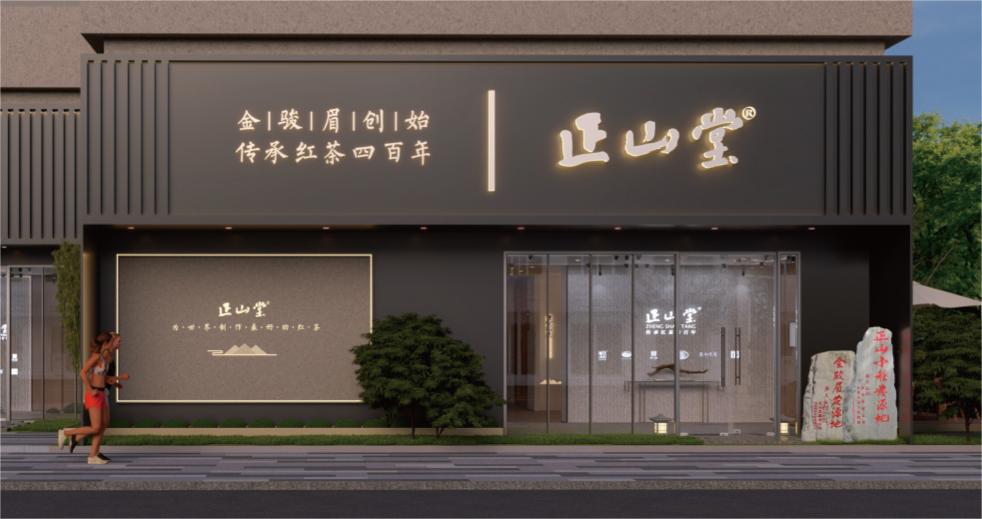

3. The quality of Junmei black tea
Quality characteristics of single-bud Junmei black tea
|
Shape |
Quality |
||||||
|
Rope shape |
Completeness |
Purity |
Color |
Aroma |
Flavor |
Liquid Color |
Leaf after Brew |
|
Solid and sharp |
Uniform and neat |
Neat |
Gold, yellow and black |
Sweet, rich, long-lasting |
Fresh and refreshing |
Golden yellow, clear and translucent |
The buds are full, red and bright |
Quality characteristics of bud-leaf type Junmei black tea
|
Shape |
Quality |
||||||
|
Rope shape |
Completeness |
Purity |
Color |
Aroma |
Flavor |
Liquid Color |
Leaf after Brew |
|
Solid and nearly sharp |
Uniform and neat |
Neat |
Black and shiny |
Sweet, lasting |
Fresh and mellow |
Golden yellow, translucent |
Red, bright and neat |
Quality Characteristics of Multi-leaf Junmei Black Tea
|
Grade |
Shape |
Quality |
||||||
|
Rope shape |
Completeness |
Purity |
Color |
Aroma |
Flavor |
Liquid Color |
Leaf after Brew |
|
|
Top |
Tight or sharp |
Uniform and neat |
Neat |
Dark brown and shiny |
Obvious aroma, fresh and sweet |
Fresh and mellow |
Bright |
Red and bright |
|
First |
Still tight |
Still Uniform and neat |
Still neat |
Dark brown and shiny |
Obvious aroma, fresh and pure |
mellow |
Still bright |
Still red and bright |
|
Second |
A bit tight |
A bit uniform and neat |
A bit neat with tea stem |
Dark brown and a bit shiny |
pure |
A bit mellow |
A bit bright |
red and a bit bright |
Chapter 5: Standard: the formation and application of the tea standard system
Standards are the mandarin of the industry, the basis and indicators of enterprise production, and also the starting point for consumers to test and review products. Zhengshantang products are based on standards, and there are standards to follow from picking to production to ensure product quality, so that every cup of tea fragrance has a "background" and a "tracking mark".
1.Establishment of standard system
Product Standard
In 2012, as the only enterprise unit, Zhengshantang participated in the drafting and formulation of the national standard: GB/T 13738.3 "Black Tea Part Three: Souchong Black Tea".
In 2015, as the only enterprise, Zhengshantang participated in the drafting and formulation of industry standards: GH/T 1118 "Jinjunmei Tea", which well regulated the Jinjunmei market.
In 2018, Zhengshantang cooperated with various production areas to draft and formulate the first national and cross-provincial black tea group standard: T/CTMA 002 "Junmei Black Tea".
Safety Standards
In the whole process of tea production and processing, complete quality control systems such as file records, base product approval, and quality traceability have been established. Archives and records must fully record inputs, agricultural operation management, product processing, product testing reports and other materials, and carry out four-level checks on the quality and safety of tea: (1) Rapid screening of pesticide residues before harvesting fresh tea leaves, qualified fresh leaves Ready to collect. (2) Sampling of tea at each processing stage is sent to a third party for inspection, and heavy metals, pesticide residues, and physical and chemical indicators are tested. (3) Carry out factory inspection of products according to batches, and only after passing the inspection can they leave the factory. (4) Regular sampling inspection of products on sale to strictly guarantee the quality and safety of products.
The Standards of Brewing and Tasting
From 2021 to 2022, we have successively formulated the group standards for brewing and tasting of Lapsang Souchong Black Tea, Jinjunmei Black Tea and Junmei Black Tea, ensuring that the tea greenness, production, craftsmanship, quality, brewing and drinking Experience and other aspects have evidence to rely on.
2. The Establishment of Standard System
Zhengshantang has invested a large number of production experimenters and scientific research personnel to build a standardized industrial system of Chinese black tea with standards, scale and quality in combination with the differences in soil, climate, precipitation, altitude, and varieties in different producing areas. The system covers all aspects of the entire tea industry chain, including varieties—management—picking—processing—logistics—pricing—service—sales—propaganda—tea tourism at the place of origin.
3. The Application of Standards
Form a sense of standardization at the production end. In the process of fresh leaf picking and processing, classification and grading are strictly carried out according to the tenderness of raw materials; raw tea and finished tea are subjected to sensory evaluation, food safety index testing, and factory inspection in accordance with standard requirements. Stability and safety of product quality.
Unify the product standard identification on the market side to form a cross-provincial and national product system. Regularly train market personnel, internalize standards in heart, externalize them in practice, understand standards, apply standards, and promote standards.
Strengthen standard awareness on the consumer side, make consumers understand product production basis and quality judgment standards, improve consumers' product identification ability, crack down on product counterfeiting, and better protect consumers' legitimate rights and interests.
Chapter 6: How To Brew
With appropriate brewing methods, black tea lovers can appreciate the unique quality characteristics of black tea and feel the beauty of black tea
1. Choosing Tea Sets
In the choice of tea sets, white porcelain tea sets or glass utensils are generally preferred for brewing black tea, which can truly reflect the color of the tea soup, and have moderate heat transfer and heat preservation properties.
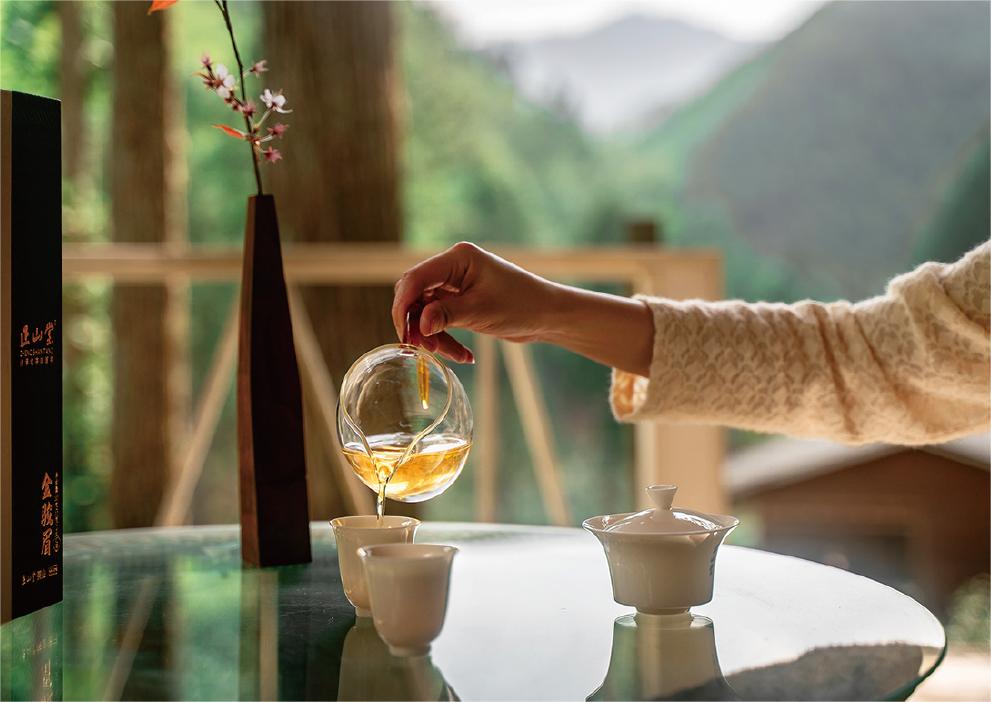
2. Brewing Process
Prepare teas—prepare water—appreciate tea—warm pot—throw tea—brew—take out liquid—pour tea—serve tea—taste tea
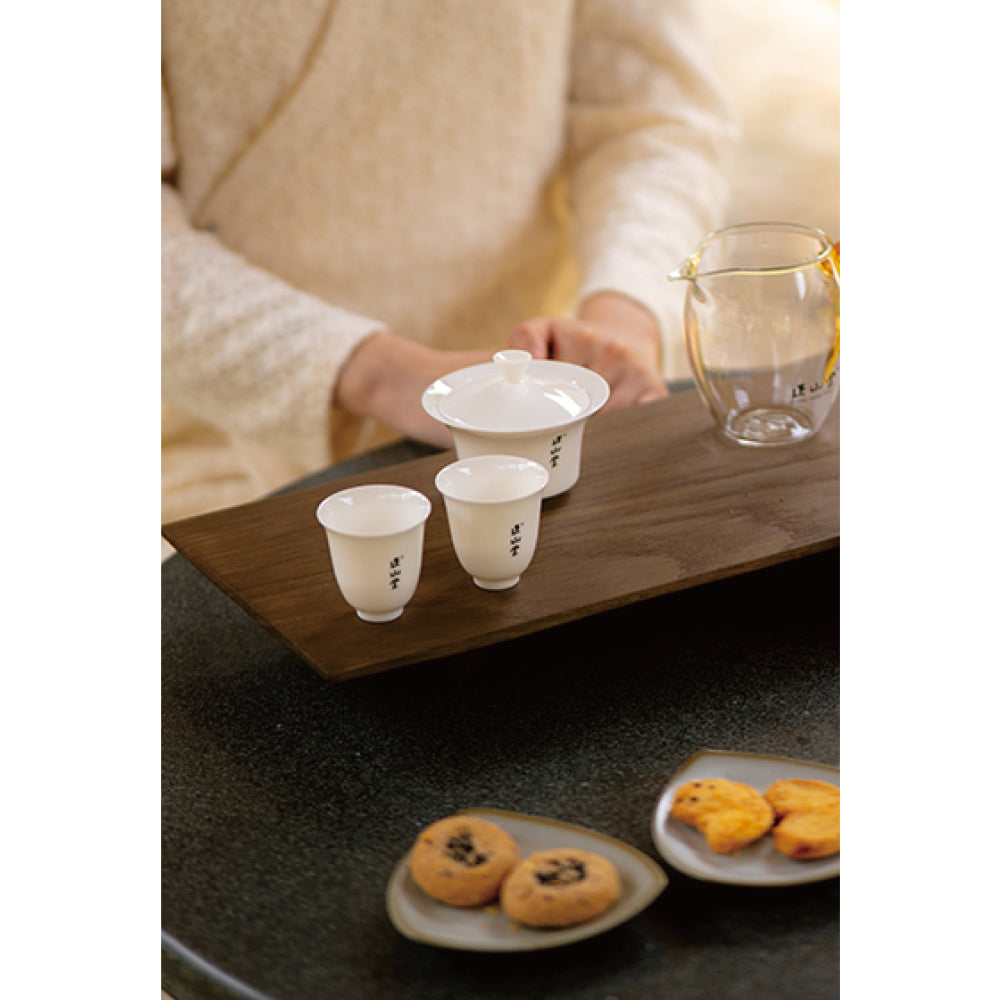
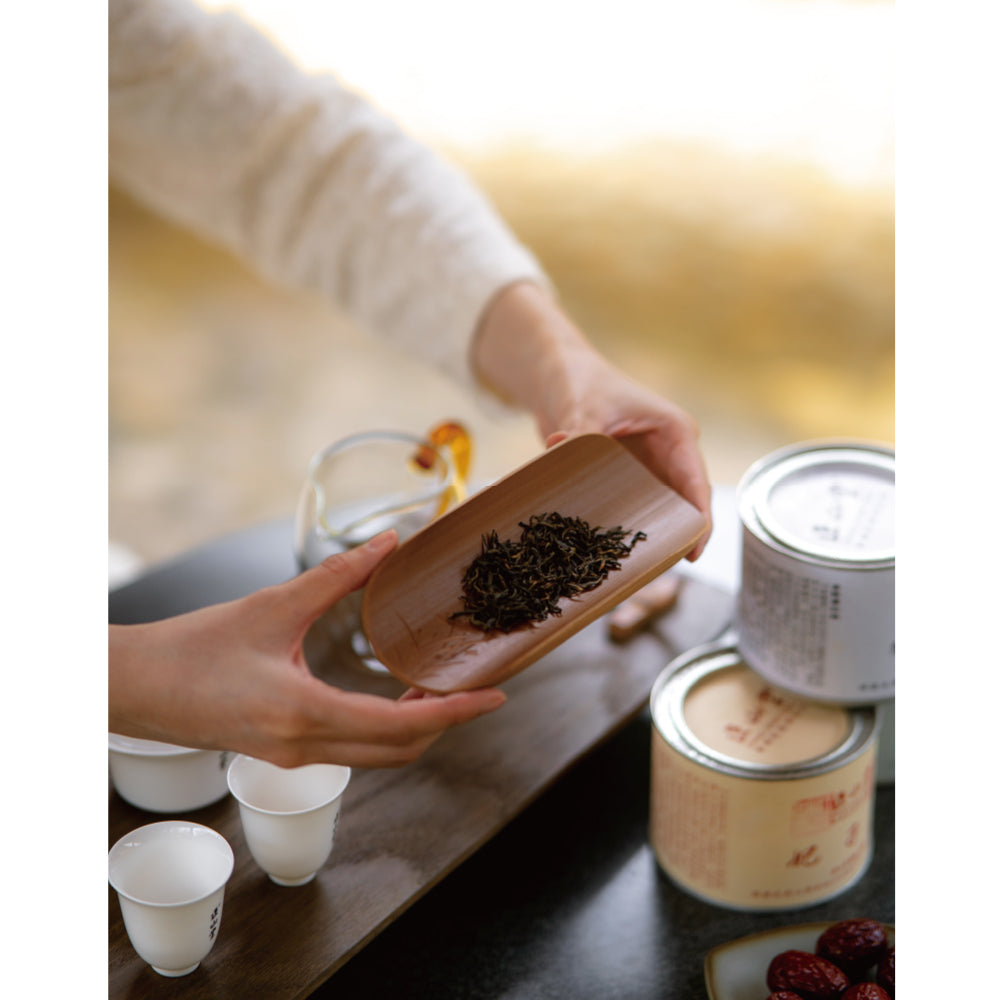
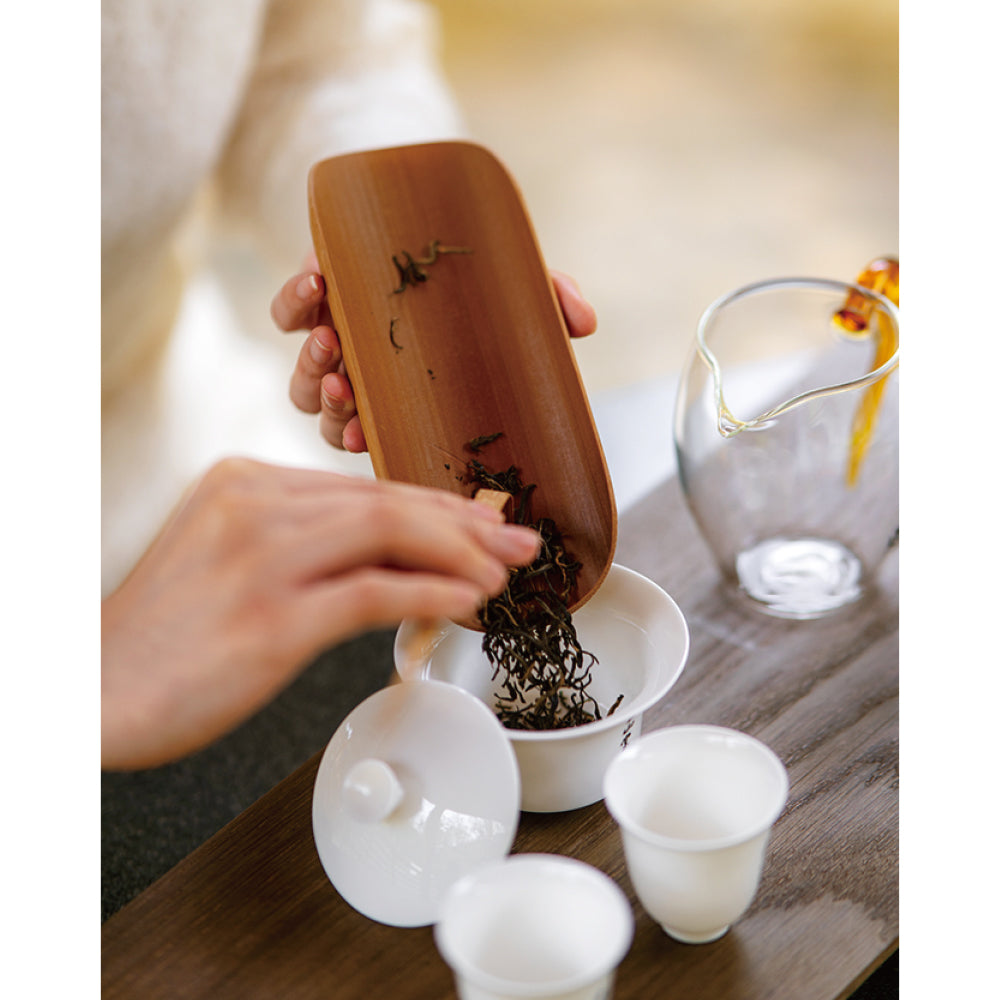
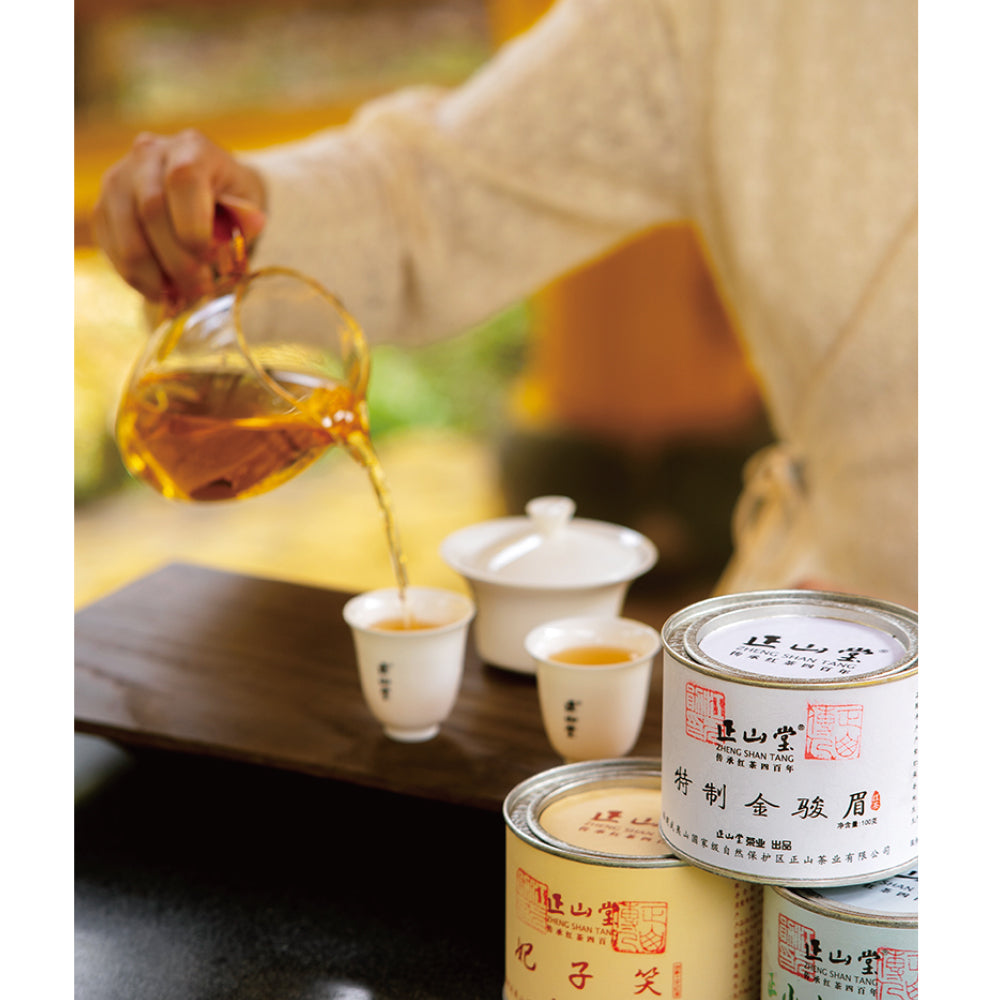
3. Key Points of Brewing
| Tenderness | Single-bud | Bud-leaf | Multi-leaf |
|---|---|---|---|
| Capacity(ml) | 150 | 150 | 150 |
| Weight(g) | 2~3 | 3~4 | 4~5 |
| Water Temperature(℃) | 100 | 100 | 100 |
| Steep time(s) | 5~10 | 5~10 | 10~20 |
Chapter 7: Tasting and Pairing
1. How to Brew
Brew with Gaiwan

Choose and warming cup, choose a white porcelain Gaiwan is the best
Add 3-5 grams of tea, add 100°C mountain spring water or pure water, the fragrance of tea is overflowing
There is no need to wash the tea, and the time to sit in the cup is relatively extended after the first tea soup comes out quickly, so you can grasp the intensity
Boil Tea
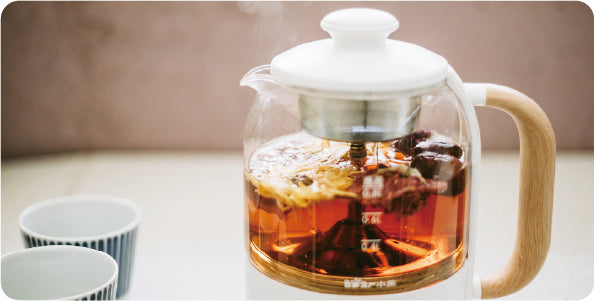
Choose a teapot made of transparent material, add 5 grams of tea, add 500-600ml of water, boil for 3 minutes and drink
Stewing Tea
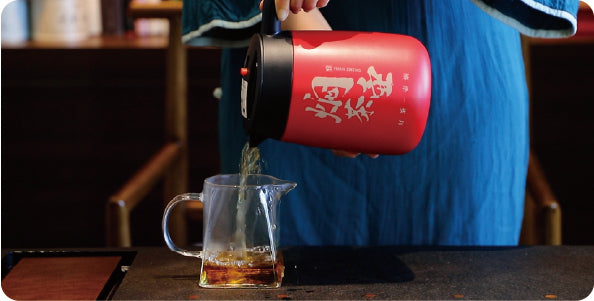
Add 3-5 grams of tea, add 500-600ml of water, stew for 3 minutes and drink.
2. Tasting and Pairing
Jujube Ginger Black Tea
Efficacy: dispelling wind and cold, invigorating qi and blood, drying dampness and reducing inflammation
Ingredients: Ginger with skin (shredded/sliced), pitted dried red dates, a cup of black tea
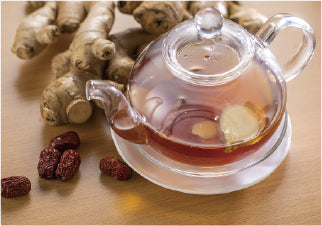
Longan wolfberry black tea
Efficacy: nourishing blood and Qi, promoting blood circulation and dispelling cold
Ingredients: Dried longan peeled and de-seeded, wolfberry, a cup of black tea
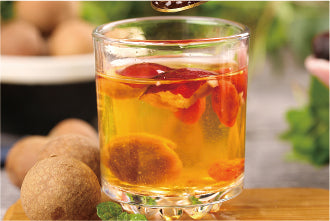
Tangerine Peel Black Tea
Efficacy: Nourishes throat and lungs, clears heat and fire
Ingredients: 1 Sydney pear, peeled and cut into pieces, an appropriate amount of tangerine peel, a cup of black tea

Hawthorn Apple Black Tea
Efficacy: Health brand appetizer, dehumidification and fat reduction
Ingredients: fresh hawthorn, sliced apples, a cup of black tea
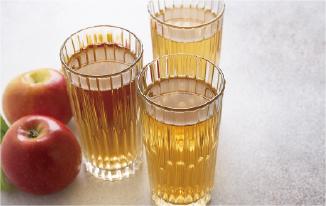
Astragalus black tea
Efficacy: Invigorate qi and raise yang, regulate spleen and stomach deficiency and cold, moisten lung and promote body fluid
Material: Appropriate amount of astragalus, a cup of black tea
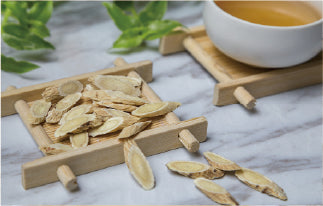
Rose Jasmine Black Tea
Efficacy: calm emotions, replenish qi and relieve depression, relieve stress
Materials: Dried roses, dried jasmine, black tea

Chapter 8: Storage
1. How to tell if the tea leaves are damp
When the tea leaves are in contact with humid air too much, and excessively absorb the moisture in the air, the tea leaves will get damp.
Watch the shape and hold it with your hands. Damp tea leaves with white mold spots should not be drunk. There is no abnormality in the appearance, and it will be broken when squeezed by hand, which belongs to the ideal water content state of the tea; if it breaks silently and is not broken, it indicates that the water content of the tea is high, and the storage environment needs to be adjusted; if the tea cannot be broken, the original shape will not change much. , it indicates that the tea leaves are seriously affected by moisture, and you need to be alert to the risk of mildew.
Smell, look at the tea liquid and taste. The surface aroma of normal dry tea is obvious and fragrant, and the color of brewing is bright and clear. The damp tea has a dull smell, which is more obvious when brewing; severely damp tea may even have a musty smell due to mildew.
2. How to Store Tea?
The storage environment of tea leaves needs to meet the conditions of cleanliness, no peculiar smell, light-proof, and relatively independent space.
Black tea should be stored at a temperature below 25°C and a relative humidity below 50%.
If the tea leaves are placed in the complete original packaging box, it is recommended to store the original packaging in a sealed box. If the loose tea can be wrapped in kraft paper bag, put in box for storage.
Zhengshantang’s classic tinplate get have better barrier properties than any other material, and their airtightness is good, which can better prevent moisture and light.
Chapter 9: Black tea and health
1. Junmei black tea contains a higher proportion of theaflavins
The water-soluble substances in tea are 30%-48%, and its main components include tea polyphenols, alkaloids, amino acids, sugars, organic acids, etc., which constitute the quality and taste of tea.
Junmei black tea made with innovative technology contains a higher proportion of theaflavins. Theaflavins are known as the "soft gold" in tea. According to clinical trials, theaflavins have at least the following five main functions and effects on the human body:
Theaflavins have a unique maintenance function on the cardiovascular system
Theaflavins can inhibit gene mutations, thereby preventing and fighting cancer;
Antioxidant effect of theaflavins;
Theaflavins are antibacterial and antiviral;
2. Junmei black tea contains a higher proportion of TSA
TSA(TheasinensinA) is a new catechin dimer discovered in recent years, which has strong anti-oxidation, anti-tumor, anti-inflammatory, bactericidal, hypoglycemic, cholesterol-lowering, and weight-loss effects.
Research by the Tea Research Institute of the Chinese Academy of Agricultural Sciences shows that black tea made according to the group standard of "Junmei Black Tea" contains higher TheasinensinA (TSA), theaflavin content and stronger antioxidant activity.
Studies have shown that the average antioxidant activity of Junmei black tea is higher than that of fruits and vegetables. Drinking 1 cup of Junmei black tea (3g) is equivalent to eating 901g of apples, 418g of blueberries, 179g of kiwi, 593g of broccoli, 959g of tomatoes and 160g of lotus root.
Contents of main chemical components of five different types of black tea samples (%)
Note: JM, PA, GY, and GZ in the picture are the codes of Junmei black tea from different production areas, and DH is the code of the control black tea
Junmei black tea has good antioxidant activity, and the higher the tenderness of the raw material, the stronger the antioxidant activity.
The content of total sugar, amino acids, polyphenols, catechins, and theaflavins in Junmei black tea is higher than that of the control black tea, which contributes to the quality of "clear, fragrant, sweet, mellow" and "golden soup color" of Junmei black tea.
The above data comes from the Tea Research Institute of the Chinese Academy of Agricultural Sciences, and the relevant results were published in "Modern Food Science and Technology"
3. Health benefits of black tea
The caffeine in black tea can stimulate the cerebral cortex to excite the nerve center, so as to refresh the mind and relieve fatigue; black tea is a fully fermented tea, mild and sweet, which can nourish the body's yang energy. Black tea is rich in nutrients, which can enhance the body's resistance. Warm stomach and dispel cold. In addition, black tea also has the effect of helping digestion and anti-oxidation.
4. How to drink black tea healthily
Drinking tea is not the more the better, but the right amount. If you drink too much tea, the alkaloids in the tea will over-excite the central nervous system, speed up the heartbeat, increase the burden on the heart and kidneys, affect sleep, and even cause tea drunkenness.
The amount of tea that adults drink per day: it is advisable to drink 515g of dry tea, and the water used to make these teas should be controlled at 4001500ml. People who exercise a lot, consume a lot, eat a lot, or eat meat as their staple food should drink more tea.
DOWNLOAD THE PDF↓
English Verison_Part1 English Verison_Part2
Chinese Version_Part1 Chinese Version_Part2
French Version_Part1 French Version_Part2
Arabic Version_Part1 Arabic Version_Part2



